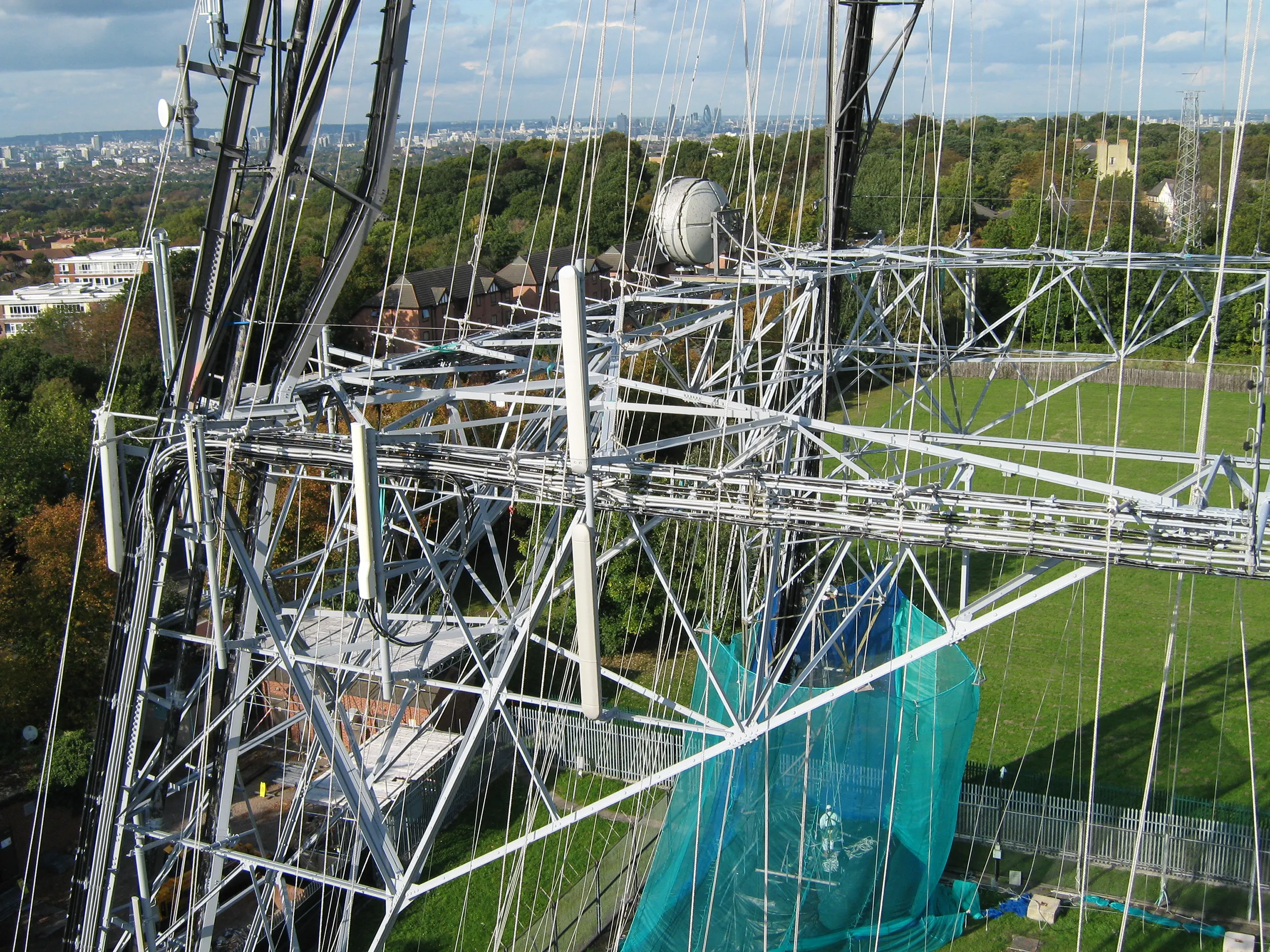The Crystal Palace Television Tower was the tallest structure in London until the construction of One Canada Square during the 1990s. Further strengthening and refurbishment work was carried out by Painter Brothers for the digital switchover.
Challenge
Exceptional skill was needed for the design and fabrication of this self-supporting tower. The structure as a whole had to be sufficiently rigid to restrict the angle of deflection of the aerials, yet the upper portion had to be slender, to comply with the demands of aerial design.
Another requirement of the design and fabrication was to ensure its aerodynamic stability, particularly against strong winds. Its prominent position in South London also required the tower to be aesthetically pleasing.
Delivery
The total weight of the steel was 450 tonnes with individual parts of the upper structure weighing more than 3 tonnes each. These had to be lifted and placed into position over 150 metres above ground.
During the erection of the panels, temporary stays attached to mass concrete anchorages were used to support the heavy corner members, until the bracing connections between them were completed. Two masts, 70 metres and 38 metres high were used in conjunction as derricks for the initial stages of steel erection. As works progressed, the smaller mast was converted into a floating derrick supported on steel-wire ropes from the corner members of the tower.
Result
The main corner members of the structure were selected to combine a low resistance to wind pressure, with great strength as struts. By the time the upper portion of the tower came to be constructed, transmissions were taking place from temporary aerials on the main part of the structure, this meant that steelwork to complete the structure had to be raised outside of the tower, at a pre-determined distance from the aerials. The topmost aerial was also lifted this way and placed into position over 200 metres in the air.
